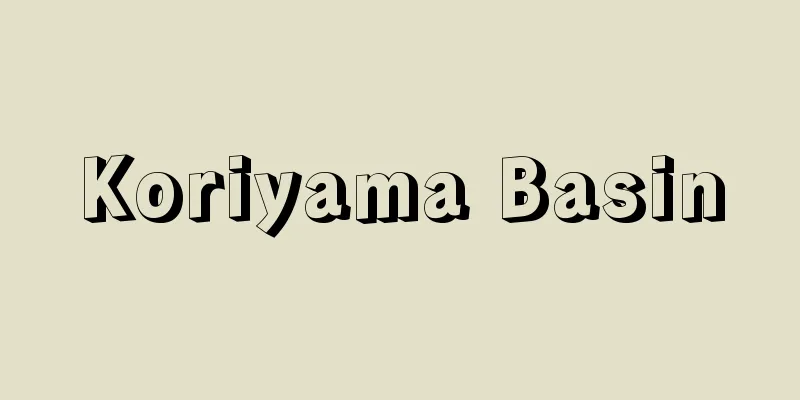Brussels - Bruxelles

|
The capital of Belgium. Located in the center of the country on the alluvial plain of the River Sanne, its name comes from Bruoc-sella (also Broek-sele), meaning "settlement in the marshes". "Brussels" is the French name, and its Dutch name Brussels is pronounced almost the same, and its English name is Brussels. The Brussels-Capital Region is one of Belgium's three "regions", along with Flanders and Wallonia, and includes 19 neighboring municipalities. It is also home to the governments of the Flemish Region, the Dutch Community, and the French Community, which make up the federation. The capital region has an area of 162 square kilometers and a population of 978,384 (2002). [Tamiko Kawakami] World Heritage RegistrationIn 1998, the square in front of the city hall and other buildings was registered as a World Heritage Site by UNESCO (United Nations Educational, Scientific and Cultural Organization) as the "Grand Place of Brussels" (World Cultural Heritage). [Editorial Department] GeographyA bilingual region where French and Dutch are spoken. Not only is it the political, economic and cultural centre of Belgium, but it is also the headquarters of the EU (European Union) and NATO (North Atlantic Treaty Organisation), and has the character of a capital of Western Europe. Over 20% of the population is foreign. It is the centre of European rail transport, and in 1835 the first railway on the continent was built between here and the northeastern suburb of Mechelen. Today, the TGV (Tejerve) runs to Paris and Amsterdam in 2-3 hours, the Eurostar to London in just over 3 hours, and the Eurocity to Cologne in just over 2 hours. The original city of Brussels occupies the pentagonal boulevard built on the site of the 14th century city walls that were removed at the end of the 19th century. The eastern plateau contains the Royal Palace, government offices, parliament, the Supreme Court, parks, and high-end shopping streets, while the western lowlands contain the commercial district, including the city hall and the stock exchange. The industrial area stretches from Vilvoorde in the north to Halle in the south along the Charleroi-Brussels Canal in the west. In addition to the ready-made clothing, leather, printing, bookbinding, film, automobile assembly, electrical machinery, soap, pharmaceuticals, fertilizers, chocolate, beer, and flour milling industries, the city is also famous for its traditional industries, such as lace, tapestry wall hangings, and carpets. The population is declining, but in neighboring municipalities it has quadrupled in one century, and residential development is progressing rapidly towards the east and southeast. In the 1970s, the city center was redeveloped with the construction of a subway, and modern buildings increased in the low-lying commercial district, shifting the center closer to Gare du Nord. It is also the largest inland tourist city and is known as "Little Paris". The Grand Place (Grand Square) is surrounded by the 15th century Gothic style town hall with its high tower and the gilded guild houses from the late 17th century, and Victor Hugo praised it as "the most beautiful square in the world". Other attractions include the Manneken Pis, "the oldest citizen of Brussels", the Cathedral of Saint Michel, the Museum of Classical Art, and the Royal Museum of Art and History. It is also the home of the Free University of Brussels, founded in 1834. [Tamiko Kawakami] historyIt developed from a village that was established on an island in the River Sanne in the late Roman period, and according to legend, a saint named Saint-Julie built a cathedral on the island. In the early Middle Ages, the Franks invaded and settled here, but it became a political and commercial center after Charles de France, Duke of Lotharingia, built a fortress there at the end of the 10th century. In the 11th century, the Counts of Louvain and then Brabant built castles, and from the mid-12th century, commerce and industry developed as a transportation hub between Cologne and Bruges. In 1229, it gained autonomy and established a market (the current Grand Place) and an assembly hall (the current city hall). At the end of the 13th century, it joined the Hanseatic League. The main product changed from woolen cloth to woolen fabrics, but economic activity centered on the wealthy citizen class became active, and in the 13th century, coupled with the increase in population, it became one of Europe's largest cities. In the 14th century, it received a charter from the Duke of Brabant and replaced Louvain as the principality's capital. Religiously, it maintained its Catholic faith and came under the rule of the Habsburgs in the 15th century. Even during the time of the Protestant Reformation and religious turmoil of the 16th century, it maintained its position as a representative city of the Holy Roman Empire, opposing the independent Protestant Netherlands. At the end of the 17th century, it was attacked by King Louis XIV of France, and from the 18th century onwards it came under the control of Austria, France and the Netherlands, but after Belgium gained independence in 1830 it became the capital. As in World War I, Brussels was occupied by German troops early in the Second World War, but it recovered well after the war and hosted the World Exhibition in 1958. It was the home of the Supreme Headquarters of the Allied Powers in Europe (SHSPE) in 1949 and NATO in 1967, but it was the establishment there of the headquarters of the EEC (European Economic Community) in 1958, then the EC (European Community) in 1967, and finally the EU in 1993, that marked Brussels' historical position in Europe. In terms of its connection with Japan, there is the Japanese cherry tree planted in the town of Boisfort in 1924, and the five-story pagoda that was exhibited at the Paris World Exposition in 1900, purchased by Leopold II, and moved to the town of Laeken. It is also interesting to note that tapestry made in Brussels is used on the Koiyama, one of the floats in the Gion Festival in Kyoto. [Isomi Tatsunori] [References] | |It is located in the eastern part of the old city, facing Brussels Park. It was rebuilt in the 18th century and remodeled in the Louis XVI style in the early 20th century. Brussels, Belgium ©Shogakukan "> Belgian Royal Palace A large square in Brussels, the capital of Belgium. It is surrounded by magnificent buildings such as the 15th century city hall (left) and the guild houses (right back). World Heritage Site "Grand Place of Brussels" (Belgium, registered in 1998) Belgium Brussels ©Shogakukan "> Grand Place The guild houses surround the Grand Place, where a market was once located. Built in the 17th and 18th centuries, the buildings of trade guilds such as bakers, tailors, and butchers remain. Part of the World Heritage Site "Grand Place of Brussels" (Belgium, registered in 1998) Belgium Brussels ©Shogakukan "> Guild House Built by order of Charles V in the 16th century, it was rebuilt in the 19th century in a neo-Gothic style. It was once used as the governor's office and a prison. It is now the city museum. Part of the World Heritage Site "Grand Place of Brussels" (Belgium, registered in 1998) Belgium Brussels ©Shogakukan "> The King's House (Brussels City Museum) Source: Shogakukan Encyclopedia Nipponica About Encyclopedia Nipponica Information | Legend |
|
ベルギーの首都。同国中央部、サンヌ川の沖積平野に位置し、名称は「沼地の定住地」を意味するブルク・セラBruoc-sella(ブルク・セレBroek-seleとも)に由来する。「ブリュッセル」はフランス語名で、オランダ語名Brusselもほぼ同発音、英語名はブラッセルズBrussels。ブリュッセル首都地域はフランドル、ワロンと並ぶベルギーの三つの「地域」の一つであり、隣接の19自治体を含む。連邦を構成する「フランドル地域」「オランダ語共同体」「フランス語共同体」の各政府も置かれている。首都地域は面積162平方キロメートル、人口97万8384(2002)。 [川上多美子] 世界遺産の登録市庁舎などが面する広場が1998年、ユネスコ(国連教育科学文化機関)により「ブリュッセルのグラン・プラス」として世界遺産の文化遺産に登録された(世界文化遺産)。 [編集部] 地誌フランス・オランダ両語使用地域。ベルギーの政治、経済、文化の中心地であるのみならず、EU(ヨーロッパ連合)、NATO(ナトー)(北大西洋条約機構)などの本部が置かれ、西ヨーロッパの首都的な性格ももつ。人口の2割強が外国人。ヨーロッパの鉄道交通の中心地で、1835年にヨーロッパ大陸初の鉄道が当地と北東郊外メケレンとの間に建設された。今日ではTGV(テージェーベー)が走り、パリやアムステルダムへ2~3時間、ユーロスターでロンドンへ3時間余り、ユーロシティでケルンへ2時間余りとなっている。 本来のブリュッセル市は、14世紀に築造された城壁を19世紀末に除去した跡に建設された五角形の大通り内部を占める。東部の台地には王宮、行政機関や議会、最高裁判所や公園、高級商店街などがあり、西部の低地には市庁舎や証券取引所など商業地区がある。工業地域は西方のシャルルロア・ブリュッセル運河沿いに北のビルボルドから南のアルまで延びている。既製服、皮革、印刷、製本、映画フィルム、自動車組立て、電気機械、せっけん、薬品、肥料、チョコレート、ビール、製粉などの諸工業が営まれるほか、レース、綴織(つづれおり)の壁掛け(タペストリー)やじゅうたんなど伝統産業が有名である。人口は減少しているが、隣接する自治体では1世紀で4倍に増加し、東部や南東部へ向かって宅地化が急速に進んでいる。1970年代に地下鉄建設とともに都心の再開発が行われ、低地の商業地区に近代的建築物が増加し、中心が北駅寄りに移動した。 観光都市としても内陸部最大の中心で、「小パリ」と称される。グラン・プラス(大広場)は、15世紀ゴシック様式の高塔をもつ市庁舎、17世紀末の金箔(きんぱく)を置いたギルド・ハウス群などに囲まれ、ビクトル・ユゴーが「世界一美しい広場」とたたえた。ほかに「最古のブリュッセル市民」たる小便小僧、サン・ミシェル大聖堂、古典美術館、王立美術歴史博物館などがある。1834年創立のブリュッセル自由大学の所在地。 [川上多美子] 歴史ローマ時代末期にサンヌ川の島にできた村落から発達し、伝説によればサン・ジュリという聖人が島に聖堂を建てたことに始まるという。中世初期にフランク人が進出、定住したが、10世紀末にロタリンギア公シャルル・ド・フランスが城塞(じょうさい)を築いてから政治・商業の中心となった。11世紀にルーバン(ルーフェン)伯、ついでブラバン伯が城を構え、12世紀中葉からケルン―ブリュッヘ(ブリュージュ)間の交通の要衝として商工業が発達した。1229年に自治権を獲得、市場(現在のグラン・プラス)と集会所(現在の市庁舎)を設けた。13世紀末にはハンザ同盟に加わった。羅紗(らしゃ)から毛織物へと主要生産物は変化したが、富裕な市民階層を中心とする経済活動は活発化し、13世紀には人口の増加と相まってヨーロッパ有数の大都市となった。14世紀にブラバン公から特許状を受け、ルーバンにかわって公国の中心都市になった。 宗教的にはカトリック信仰を堅持し、15世紀にハプスブルク家の支配下に入り、16世紀の宗教改革、宗教争乱の時代にも神聖ローマ帝国の代表的都市としての地位を占め、独立したプロテスタントのオランダに対抗した。17世紀末、フランス王ルイ14世の攻撃を受け、18世紀以降、オーストリア、フランス、オランダの支配下に入ったが、1830年のベルギー独立後、首都となった。 第一次世界大戦のときと同様に、第二次世界大戦でも、戦争初期にドイツ軍に占領された。しかし戦後の復興は目覚ましく、1958年には万国博覧会が開かれた。1949年にヨーロッパ連合国最高司令部(SHSPE)、1967年にNATOの本部が置かれたが、ブリュッセルがヨーロッパに占める歴史的地位を示すことになるのは、1958年にEEC(ヨーロッパ経済共同体)、ついで1967年にEC(ヨーロッパ共同体)、さらに1993年にはEUの本部がそこに設置されたことである。 日本との関係では、1924年にボワフォールの町に植樹された日本の桜、また1900年のパリ万博で展示され、レオポルト2世が購入、ラーケンの町に移築された五重の塔があげられる。京都の祇園祭(ぎおんまつり)の山鉾(やまぼこ)の一つ、鯉山(こいやま)にブリュッセル製の綴織が用いられているのも興味深い。 [磯見辰典] [参照項目] | |旧市域東部、ブリュッセル公園に面して建つ。18世紀に再建され、20世紀初めにルイ16世様式に改築された。ベルギー ブリュッセル©Shogakukan"> ベルギー王宮 ベルギーの首都ブリュッセルにある大広場。15世紀に建てられた市庁舎(写真左)やギルド・ハウス(同右奥)など、壮麗な建築物に囲まれている。世界文化遺産「ブリュッセルのグラン・プラス」(ベルギー・1998年登録) ベルギー ブリュッセル©Shogakukan"> グラン・プラス かつて市場が開設されたグラン・プラスを取り囲むように建ち並ぶギルド・ハウス群。17~18世紀の建築で、パン職人、仕立て屋、肉屋などの同業組合の建物が残る。世界文化遺産「ブリュッセルのグラン・プラス」の一部(ベルギー・1998年登録) ベルギー ブリュッセル©Shogakukan"> ギルド・ハウス 16世紀にカール5世の命で建設され、19世紀にネオ・ゴシック様式をとり入れて再建。かつては総督政庁や牢獄としても使用された。現在は市立博物館となっている。世界文化遺産「ブリュッセルのグラン・プラス」の一部(ベルギー・1998年登録) ベルギー ブリュッセル©Shogakukan"> 王の家(ブリュッセル市立博物館) 出典 小学館 日本大百科全書(ニッポニカ)日本大百科全書(ニッポニカ)について 情報 | 凡例 |
<<: Royal Museum of Fine Arts of Brussels - Musées royaux des Beaux-Arts de Belgique, Bruxelles
Recommend
Qinā (English spelling)
A town located in central Egypt, about 500 km sout...
"Z"trash - "Ztrash
In fact, Hammer Productions began to find a way t...
Tubular gland - Kanjosen
...Glands are divided into several types accordin...
Ludwig Bieberbach
1886‐1980 German mathematician. Born in Godderau, ...
Mad writing - Kyobun
A type of beautiful prose that was popular among ...
Strawberry (strawberry) - Strawberry (English spelling) Fragaria chiloensis var. ananassa; strawberry
In a broad sense, strawberry refers to perennial p...
Kitarody - Kitarody
…An ancient Greek stringed instrument, it has two...
Auspicious Road - Kitsureikaido
…The Mino Road, which connected the Nakasendo and...
Lead acid battery - Namarichikudenchi (English spelling)
A typical storage battery that uses porous lead d...
Freitas Branco, L.de (English)
…In the 19th century, the influence of Italian op...
The Beginning of Nishikie Paintings of Specialties of the Eastern Capital
...Around this time, "Kanaya Kingoro Ukinaga...
Ojima Clan
The Fudai Domain had its headquarters in Kojimamu...
Shunga Dynasty - Shungachō (English spelling) Suga
An ancient Indian dynasty (c. 185-c. 80 BC). The ...
Crassulaceae - Crassulaceae
A perennial plant of the Crassulaceae family (APG...
SLOC - Sloc
"sea lane of communication" A sea route ...
![Hieron [I] - Hieron](/upload/images/67cc98e4a4b79.webp)








